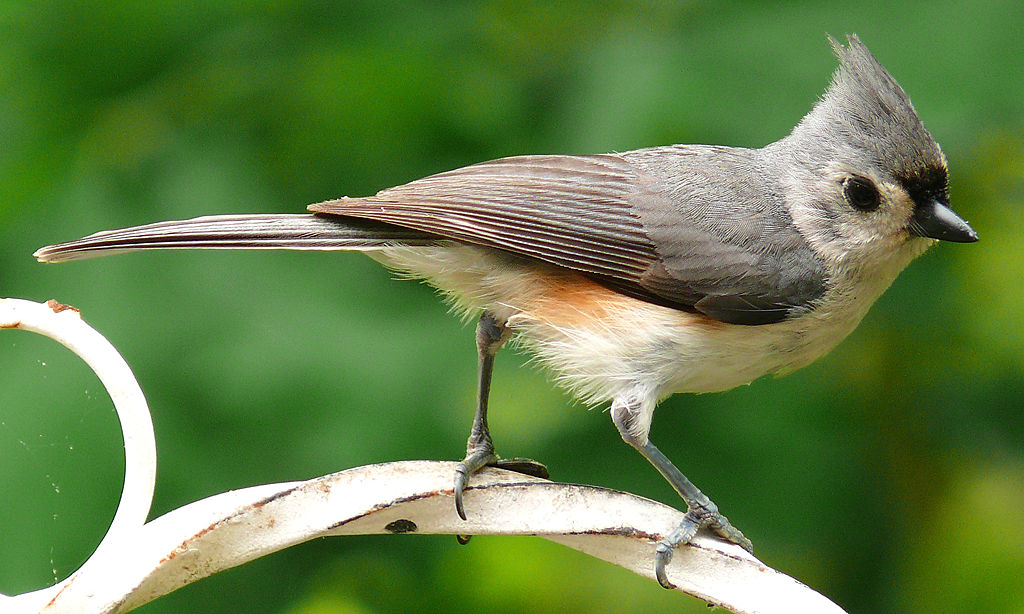Tufted Titmouse (Baeolophus bicolor)
 |
| Tufted Titmouse |
Anyone who's birded the eastern forests have come to intimately know this little bird. He's among the first birds you learn to identify as a beginning birder and easy to distinguish once you know what you're looking for. These charismatic and chatty birds are not just a staple but a fascinating bird of behavior.
The Tufted Titmouse maintains small territories and continues to defend them well past breeding season. They're so concentrated in their territory that that few pairs may never leave their homerange. This means your backyard titmice may stay with your for their whole life!
Like blue jays, they are a caching species that store food away for winter. In the fall, you can watch titmice raid bird feeders with what seems like a voracious appetite. Instead of eating the seeds, they'll crack them open on a branch and store them away for later. This can be a problem as they're also known to choose the biggest seeds possible even if that means throwing other bird seed on the ground to get to it. One way to avoid this is to have a bird feeder with just large sunflower seeds, so they can selectively feed there instead.
Charismatic and chatty, titmice are more curious than shy, and will readily come up close to you in response to your approach or sound. They give great looks to anyone around, and like chickadees are useful for birders. You can use their gregarious nature to find other birds any season. During the spring and fall, they are useful in finding mixed species flocks full of migrant warblers and vireos. In the winter, when birds are scarce, you can chase down the sound of a loud titmouse to find other winter birds foraging together. Once you learn their calls you'll realize 50% of the forest bird songs were really just titmice! This will hopefully make identifying other calls much less daunting.
----------------------------------------
The Tufted Titmouse and Black-crested Titmouse
Up until 2002, the related Black-crested Titmouse was considered a subspecies of Tufted Titmouse. This sub-tropical species lives mainly in the warmer and drier parts of Texas and north east Mexico.The two species maintain a hard range along the IH-35 corridor in Texas. This line corresponds not only with the raised elevation of the Balcone's faultline, but the precipitation gradient across the state. The wetter areas of East Texas favor the Tufted, while the semi-arid zones in the Hill Country suite the Black-crested Titmouse. There's even a thin line between the two ranges where both species breed together creating a hybrid that has a completely black-crest and forehead!
 |
| The two ranges of the Tufted Titmouse (purple) and Black-crested Titmouse (green) lining up along the 35in/yr precipitation line (per ebird.org) |
Admittedly, one reason I love the Tufted Titmouse is they remind me of Black-crested Titmice back home in Texas. In the Juniper/Oak forests of central Texas, the juniper is usually less foraged compared to the bountiful oaks. Usually only the resident endemics like the Black-crested Titmouse and Golden-cheeked Warbler regularly forage on them. It's because of this that I always believed they loved Central Texas as much as I do.
Sometimes you don't need a good reason to go birding, just a little reminder of home.
-Boone

No comments:
Post a Comment